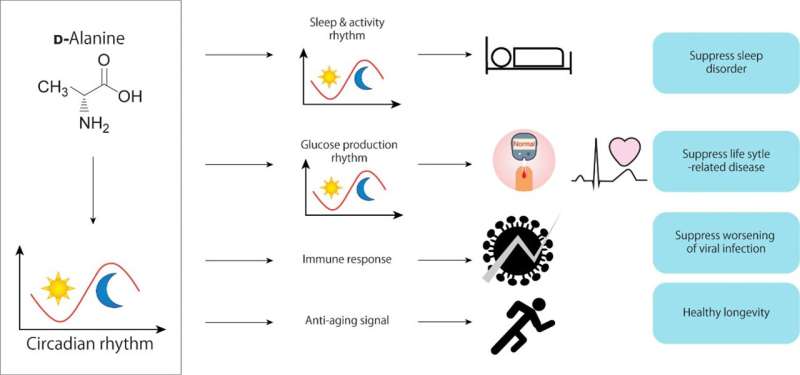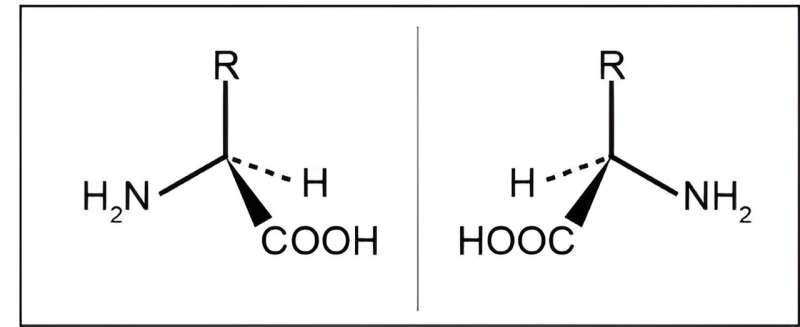This article has been reviewed according to Science X's editorial process and policies. Editors have highlighted the following attributes while ensuring the content's credibility:
fact-checked
trusted source
proofread
Research finds amino acid D-alanine could be key to healthy sleep and blood sugar

Only recently was it discovered that amino acids, the building blocks of proteins, exist in two different forms: L- and D-forms. While all natural proteins consist exclusively of L-amino acids, the function of D-amino acids remained poorly understood, despite being present in the food we eat every day.
Now, a multi-institutional research team led by Osaka University has revealed a function of one D-form amino acid: D-alanine. So what does it do, and how did they uncover its function? To understand, we need a little background information. The study is published in Kidney360.
The circadian clock, a natural oscillation in our bodies that aligns with the 24-hour cycle of day and night, affects many biological processes. One of these is gluconeogenesis, in which new glucose can be created to maintain energy levels in lieu of carbohydrate intake. While gluconeogenesis was known to vary with circadian rhythm, the reason why was unknown.
There were some clues, however. D-alanine is found in tissues that metabolize glucose, and trace levels of D-alanine in blood and urine had been reported to vary with the circadian rhythm.
Using special equipment and an advanced analytical technique, the researchers were able to detect and quantify trace levels of the rare amino acid. The team could then verify that levels of D-alanine reliably change with the circadian clock; the variations are caused by the removal of D-alanine via urine, a process controlled by the kidney. They also showed that sleep was key in regulating D-alanine levels.

"We decided to look at which genes are expressed when the kidney is exposed to D-alanine," explains lead author of the study, Shinsuke Sakai. "We used deep-learning analysis with an iterative random-forest algorithm to identify the targeted genes. We found that D-alanine upregulates both genes linked to gluconeogenesis and genes known to be related to the circadian rhythm."
Analysis of transcription factors, which are proteins that regulate gene expression, showed that the changes induced by D-alanine were mediated by a protein called Cry2, which is known to be a key circadian regulator. Under the circadian rhythm-disturbed condition, treatment of D-alanine improved the daily rhythm.
"Through these experiments, we were able to show that D-alanine is a link between gluconeogenesis in the kidney and the circadian clock, and that D-alanine activates gluconeogenesis through the circadian transcriptional network," says senior author Tomonori Kimura.
Revealing the link between D-alanine and the circadian clock represents a major step forward in our understanding of these rare D-amino acids. One exciting possibility is new treatments for diseases related to glucose, e.g., diabetes, and the circadian clock, e.g., sleep disorders.
More information: Shinsuke Sakai et al, d-Alanine Affects the Circadian Clock to Regulate Glucose Metabolism in Kidney, Kidney360 (2023). DOI: 10.34067/KID.0000000000000345




















